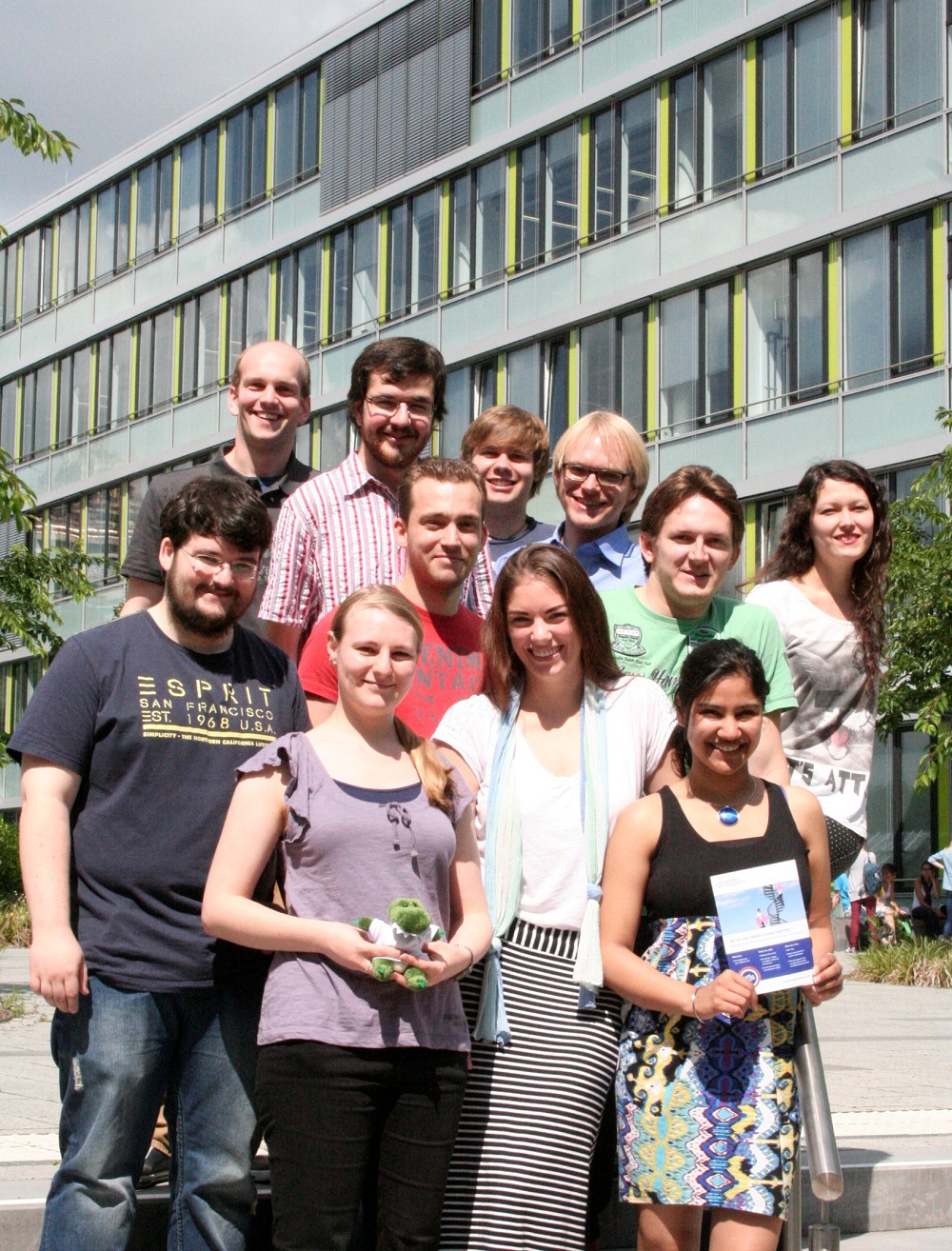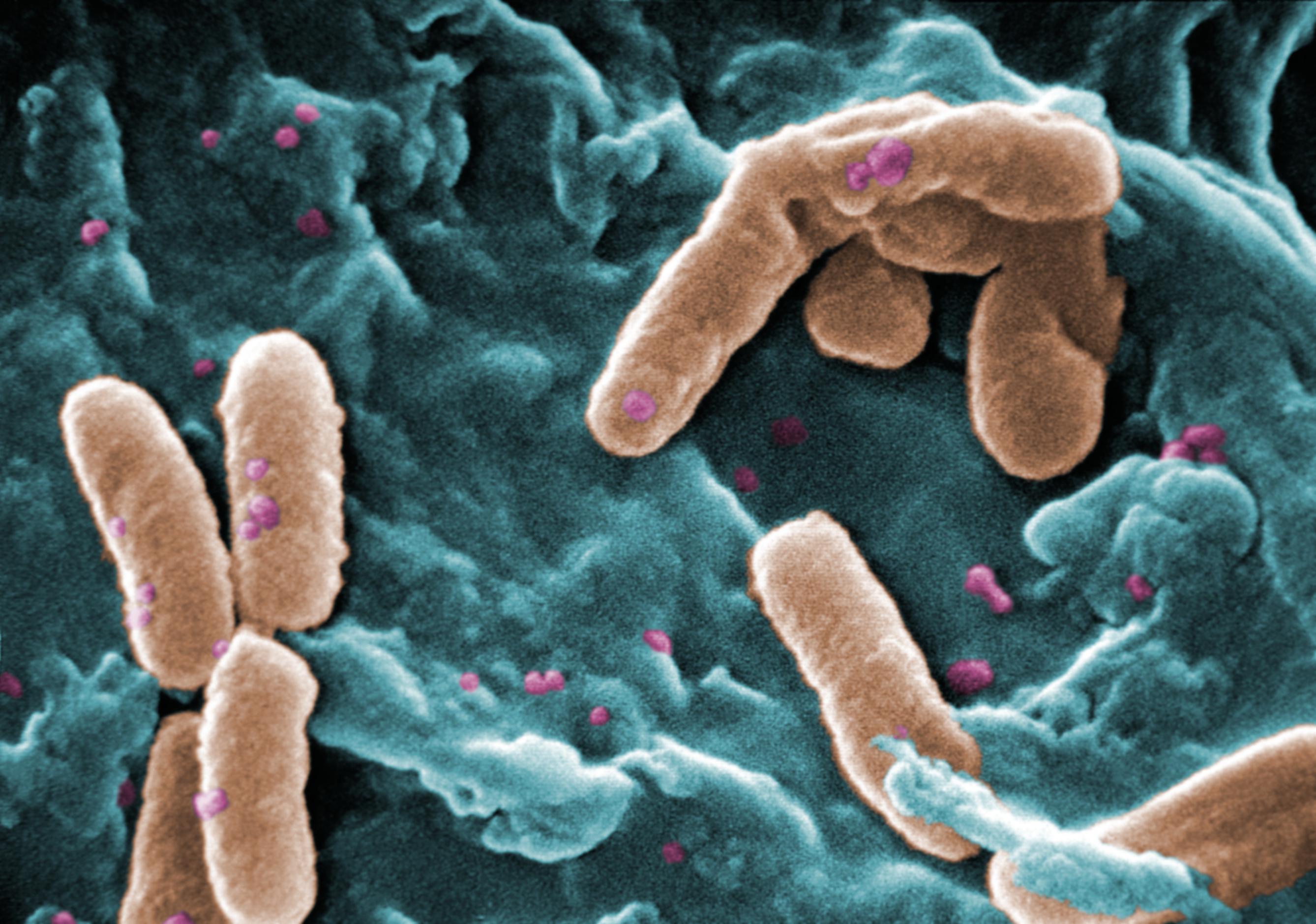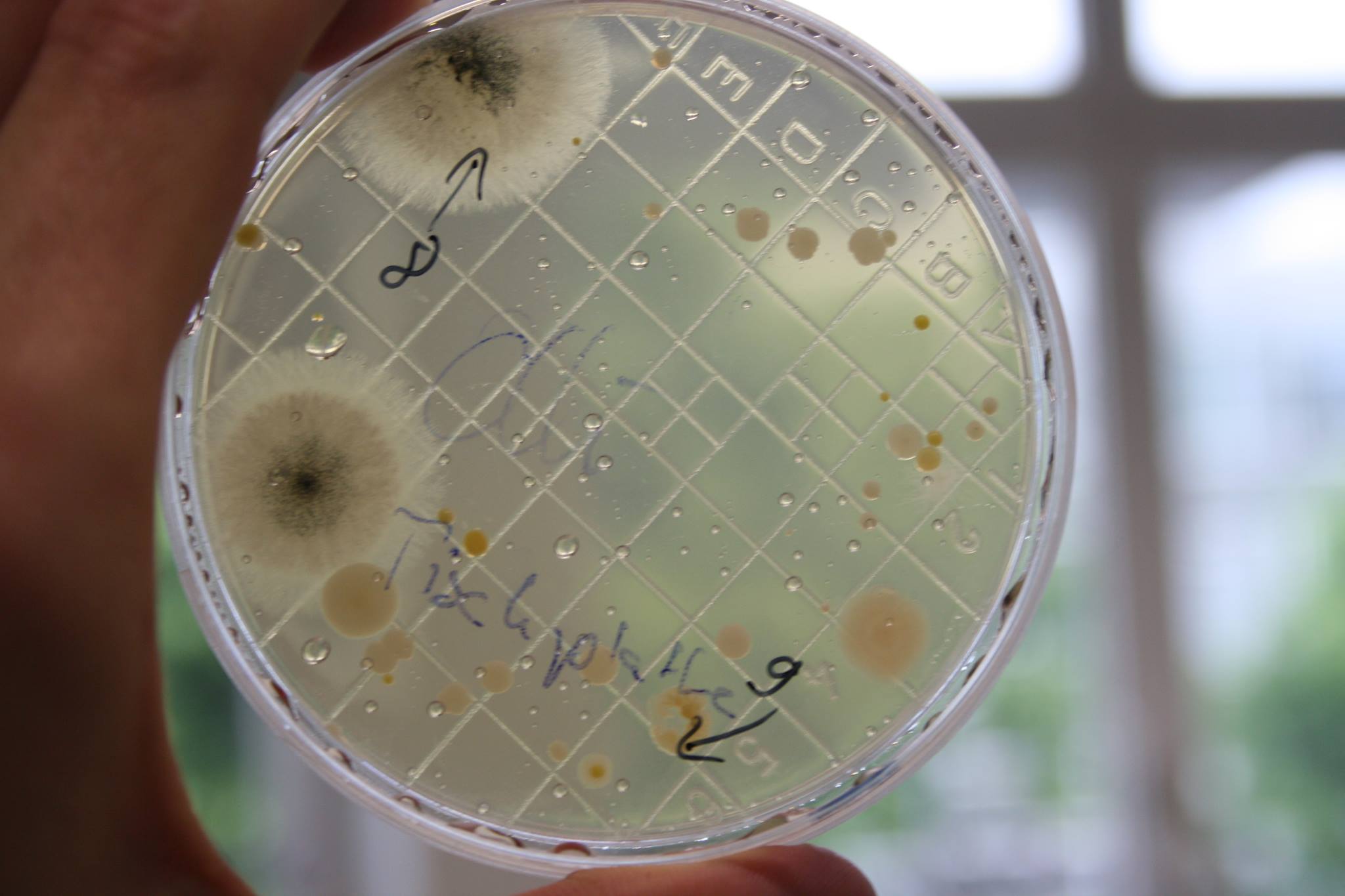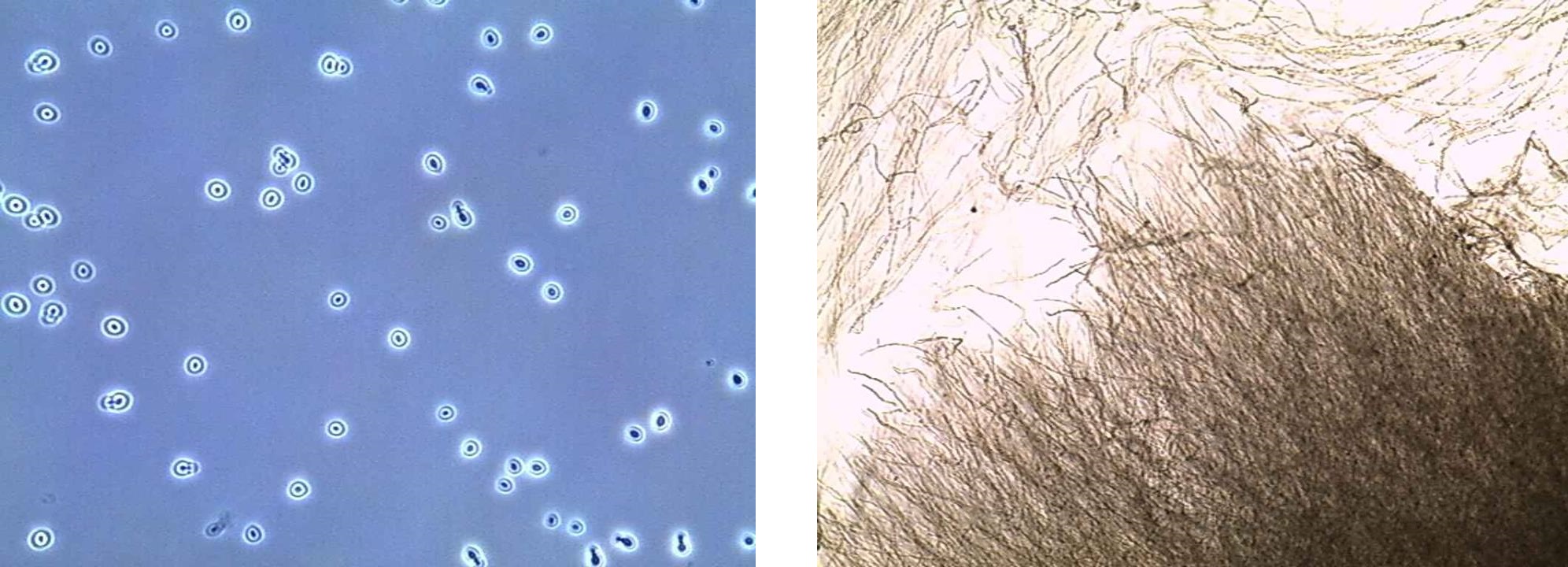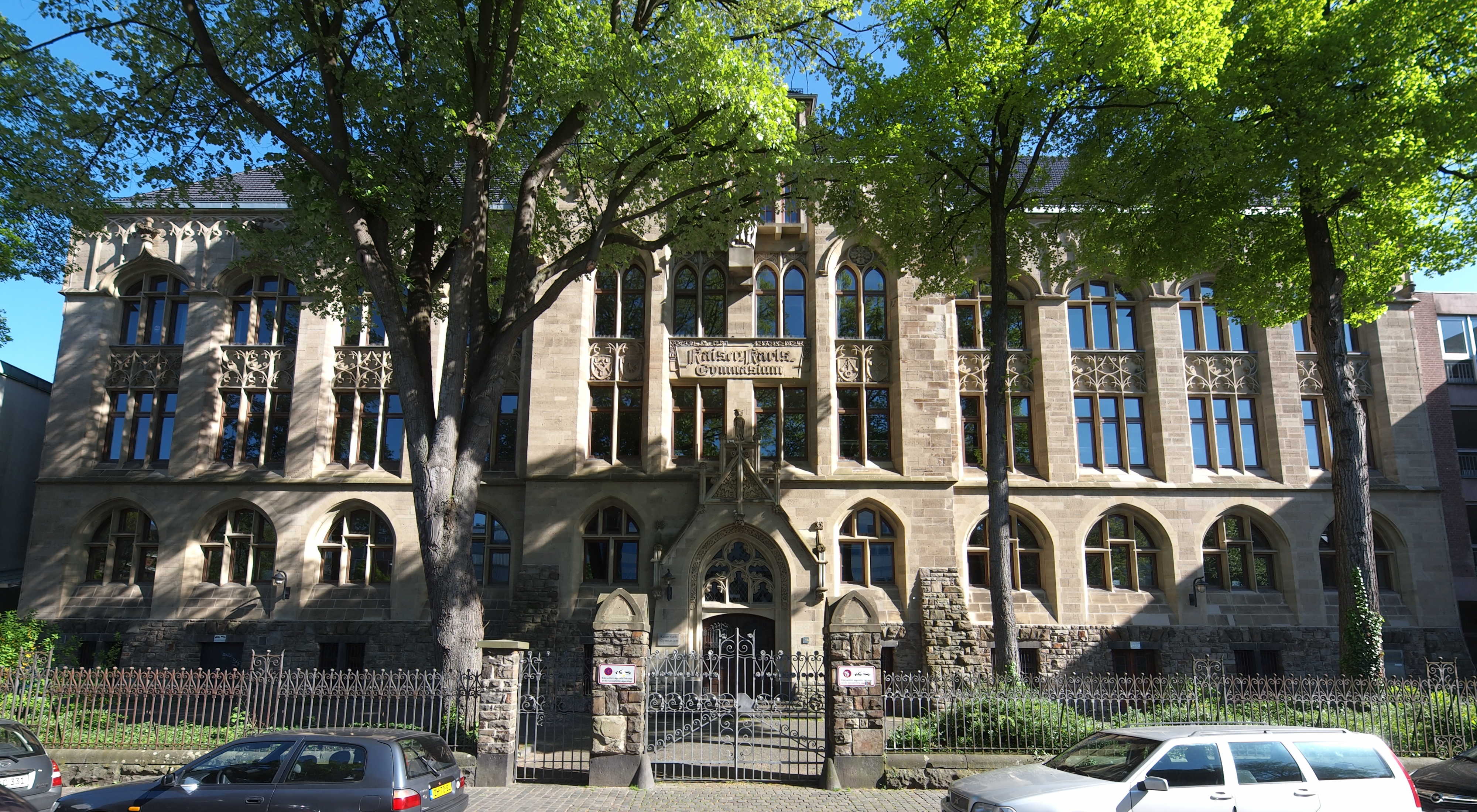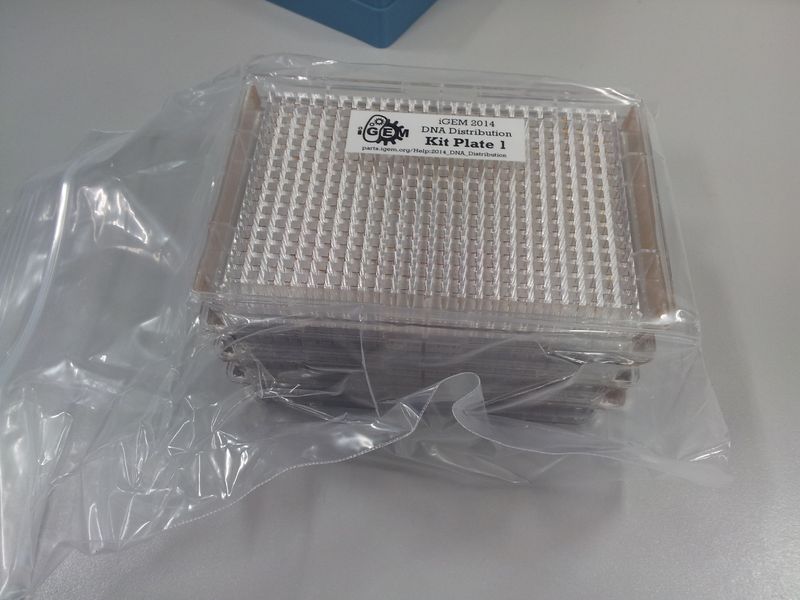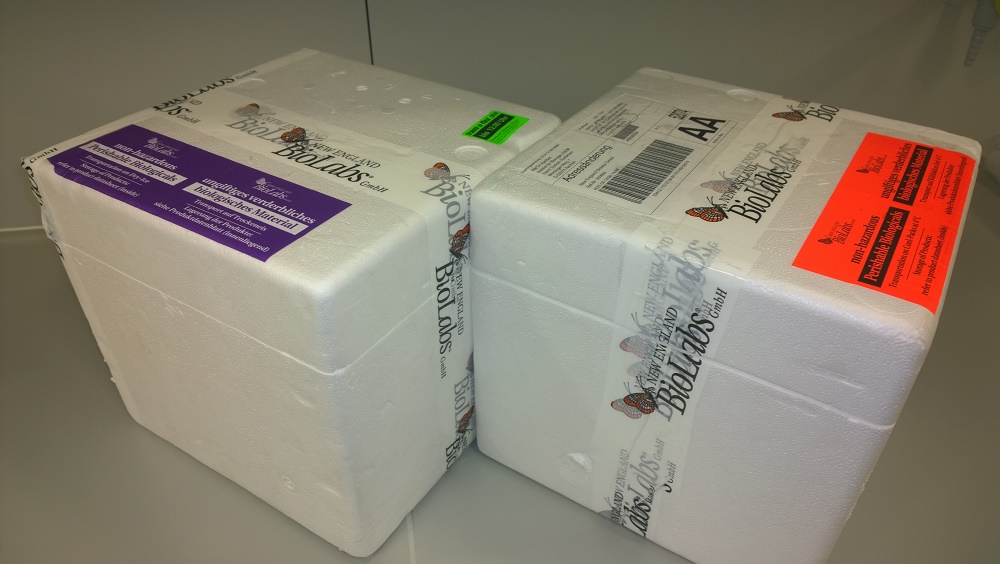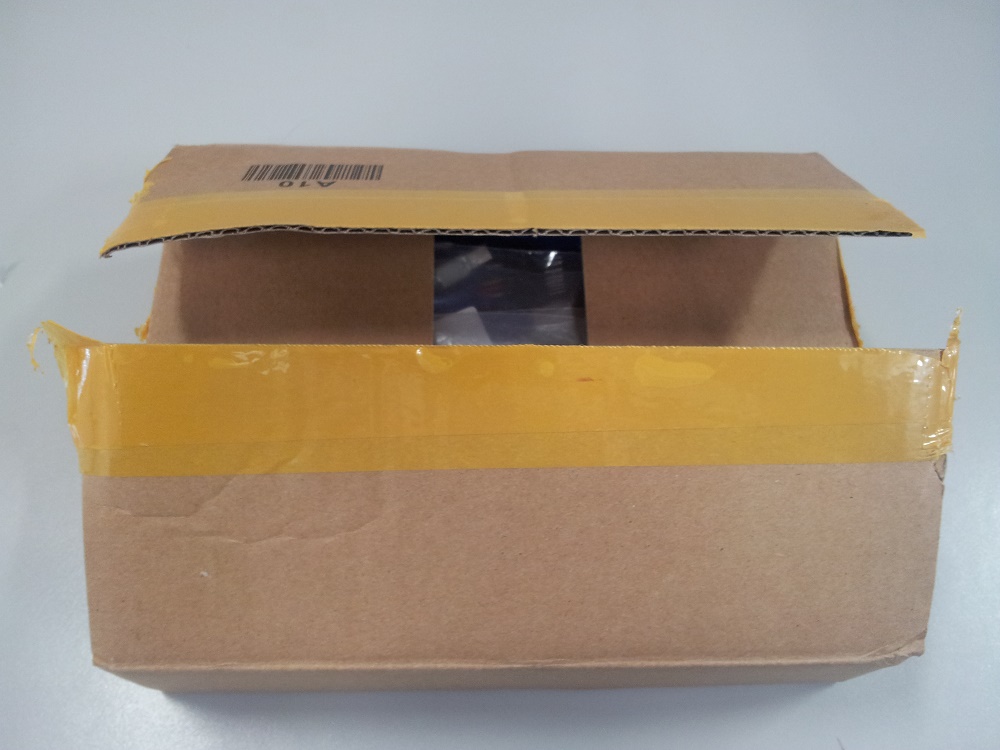Blog #19 - Open Hardware at the Maker Faire Hannover
Michael 03:55, 6 July 2014 (CDT)
This weekend Florian, René and Michael joined Ansgar on a trip to the [http://makerfairehannover.com/ Maker Faire Hannover 2014].
The Maker Faire is an exhibition with things that people built on their own using readily available tools. Dozens of 3D printers and microcontrollers can be examined and there are a lot of devices visitors can interact with.
Apart from the fire-spitting dragon, our OD and fluorescence measurement devices attracted a lot of attention. We spoke with hundreds of visitors and had a lot of interesting conversations.
Saturday evening, Carsten Ludwig from the iGEM Team Braunschweig visited us. We showed him the most fascinating stands and afterwards went to the city to walk the [http://www.roterfaden-hannover.de/ Red Thread of Hannover], a track going past 36 very central tourist attractions as e.g. the roofless church:
On this quick sightseeing trip we took a nice panorama of the Aegidienkirche.
When the #NEDCRC soccer game started, we settled for some hamburgers, fermentation broth and exchanged funny stories about our lab experience.
On Saturday the run on our stand had been so enormous that we had to improvise and print new flyers at our hostel for Sunday, the second and last day of the fair. Just like the day before, a lot of people showed interest in our stand and especially René passionately demonstrated our devices and informed about synthetic biology as well as our project "Cellock Holmes".
At about midday, Manuel, advisor of Team Bielefeld, visited us and got to experience our measurement device too.
When we left Hannover Monday morning, we decided to stop by in Bielefeld to meet the rest of their team. This way they too got to test our OD and fluorescence measurement device and we got to eat some delicious ribes cake :)
Five hours later, we left the Bielefeld team to eat some incredibly spicy pizza and continue our journey back home to Aachen. On the Autobahn we took the time to write down all experiences and things we learned to share them with our team in the coming days.
tl;dr: We had an awesome trip to the Maker Faire Hannover, presented our devices to hundreds of people and met the teams Braunschweig and Bielefeld.
If you like to see more about our weekend have a look at the following gallery =)
 Trying to squeeze everything into the much too small trunk...  Hmm... how does that work?  Finally! Let's go to Hannover!  Getting close to our destination  After a little traffic jam we made it to the MakerFaire  Florian ready to "Make Light"!  Some last preparations...   Enthusing future Nobel Prize laureate with Synthetic Biology and Open Hardware  Caught the attention of VDI (The Association of German Engineers)  Am I going to become a TV star?  Trying to hold back stage fright  Carsten from iGEM Team Braunschweig arrived and burns with desire to get to know our devices ;)  Aachen and Braunschweig exploring Hannover  Sadly, every evening comes to an end... Thanks to Carsten for visiting us at the MakerFaire and spending the evening together! =)  Arranging the new nightly printed flyers  The left device measures the fluorescence of riboflavin. Can you guess what we have used to demonstrate our OD measurement device at the right? ;)  Manuel, advisor of iGEM Team Bielefeld having a close look at our devices  Promising frist contact with iGEM Team Bielefeld  Florian controling this childrens' game only with the strenght of his mind  A well deserved rest playing some table teris  Still in presentation mode demonstrating our fluorescence device to iGEM Team Bielefeld  Fascination of technology  After enjoying delicious cake and having interesting conversations with the iGEM Team Bielefeld one last picture before heading back home...
|
 "
"
